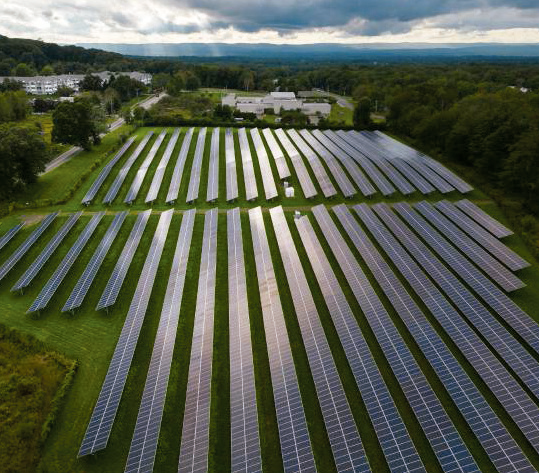The folks who run New England’s power grid think New Hampshire is going to see big changes in the creation and the use of electricity over the next decade, with a ton of new solar panels feeding a ton of new heat pumps and roughly 200,000 more electric vehicles.
That being said, the way we make and use energy is changing so fast that predicting the future of power has gotten more difficult than ever.
“Most regular folks are not aware of how fast the transition is happening,” said Sam Evans-Brown, executive director of Clean Energy New Hampshire, an advocacy group.
Prices of solar power and battery storage are falling faster than expected and those technologies are coming online much more quickly than had been anticipated. Wind power is also growing fast, although that’s less of a factor in New England unless the offshore wind industry suddenly accelerates.
On the demand side, the use of electric heat pumps instead of oil- or gas-fired boilers is also rising sharply, while the number of electric vehicles on the road continues to increase, although the growth is not as sharp as some optimists had hoped.
As a result, long-term forecasts of how and when and how much energy will be made and used should be eyed with a very large grain of salt.
The recent predictions from ISO-New England come in their annual update of estimates for the next 10 years, called CELT for Capacity, Energy, Loads and Transmission. They are used by regulators, businesses and planners to help make decisions about the present and future of the power grid.
“This gets to one of the core debates about the energy transition. … Is it more like the transition from wood to coal, or is it more like the transition from landlines to cellphones?” said Evans-Brown. The world’s change in fuel used for heating took several decades, but as we all know, the triumph of cellphones took much less time.

A field of solar panels along West Bay Road in Amherst, Mass. (Photo by Dan Little/Greenfield Recorder)
“There’s pretty strong evidence that it’s more like cellphones because … you have many, many different factors making different decisions based on technology, as compared to a small number of actions making decisions based on capital plans. So the energy transition can move much faster than anyone plans for,” Evans-Brown said.
As an example of resulting uncertainty, he pointed to ISO-NE’s past predictions about electric vehicle uptake. Using New Hampshire’s lack of government support for electric vehicles and our sparse public charging network as a basis, ISO-NE guessed how many electric vehicles would be registered in the state in 2023.
They under-estimated by a full 35%. However, forecast errors can cut both ways: ISO-NE over-estimated how many electric vehicles Massachusetts would have in 2023 by a whopping 77%.
Which of those patterns will be more prevalent going forward: New Hampshire out-performing expectations, or Massachusetts under-performing them? Nobody is really sure at this point.
With that in mind, here’s what ISO-New England guesses will happen in New Hampshire by 2033:
The amount of rooftop solar, officially called behind-the-meter photovoltaics, will more than double from 233 megawatts today to 468 MW. A megawatt can power around 700 typical New Hampshire homes at a time.
The amount of electricity consumed by heating will grow 12-fold, from 40 gigawatt-hours over the course of a year to 477 GWH. That increase would be driven almost entirely by electric pumps, which are much more efficient than old-fashioned resistance heating.
The amount of electricity consumed by transportation will grow a staggering amount, from 14 GWH a year today to slightly over 1,000 GWH a year, as the total number of personal and fleet EVs on the road grows to more than 203,000 from about 3,500 today.
Region-wide, ISO-NE sees total energy use in the six states increasing roughly 2% each year, a total increase of about 17% by 2033.
— DAVID BROOKS/CONCORD MONITOR